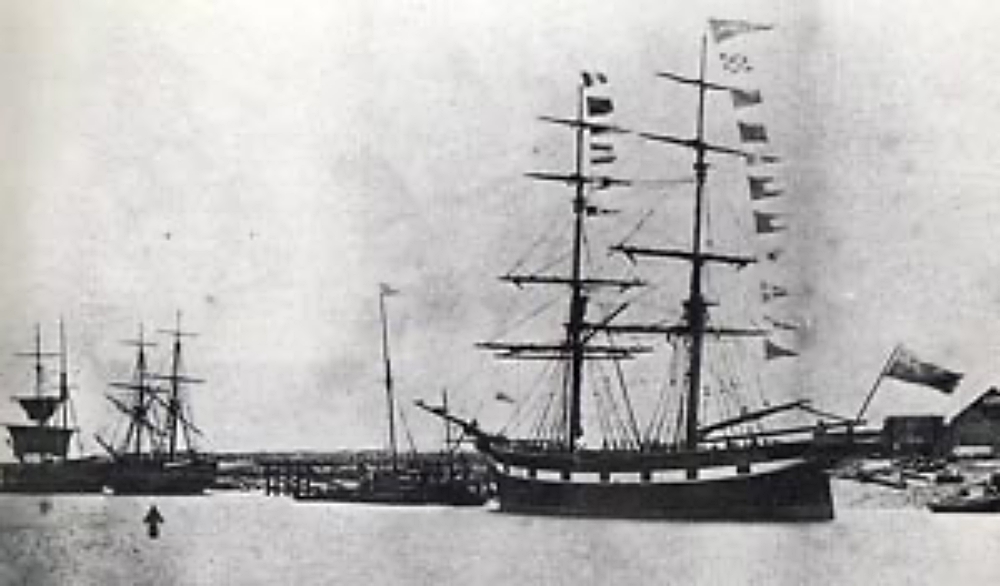Grate Expectations
It takes an agile leap of the imagination to visualise Geordie collier brigs – tough-working sailing ships immortalised in the paintings of John Constable – sailing up to Worthing beach to deliver cargoes of coal.

Such deliveries carried on until almost the end of the 19th century and, as Freddie Feest recalls, the coal was “jumped out” into horse-pulled carts that came alongside at low tide.
It could be a back-breaking job, so who did it? Local teenage lads who were willing to shift 60 tons of coal a day for just 1s 6d and their dinner.
How they achieved the task, in the absence of any type of dockside crane, puzzled me – until the day I met Richard Bacon.
RICHARD BACON lived in Portland Road, Worthing, and remembered those days vividly.
As the Victorian era came to an end, he was working as an ordinary seaman on one of the coal-delivering brigs, the Ebenezer of Littleham-pton, for £1 a month.
In his younger days, while living in Bo-Peep – later renamed Winton Place, a cul-de-sac just north of today’s Worthing Town Hall – Richard would walk the 10 miles to Littlehampton each morning to begin work at six o’clock, “jumping” coal out of barquetines into railway trucks belonging to the old Worthing Gas Company.
He explained that to do this, he and his fellow workers used a method similar to that evolved decades earlier to unload coal from brigs off the beach at Worthing and other Sussex coastal towns.
The jumping gear consisted of a single iron block made fast over the ship’s cargo hatch, with a rope running through it, with a hook at one end for the baskets, each of which held two hundredweight of coal.
The other end of the rope was for hauling the baskets up, but as it took three strong lads to do this, a cross-piece of wood was fastened to the tail end of the hauling rope and three ropes were tied to that cross piece, one for each jumper.
A farm gate was then propped upright beside the cargo hatch and lashed to the bulwarks.
The jumpers climbed to the top bar and gave three strong pulls to get the basket started on its upward journey from the deep hold. At the third pull, with, usually, perfect timing, they jumped back off the gate.
This sent the basket flying upwards to the ship’s mate, who walked a plank laid across the hatchway and deftly swung the basket across the deck to the loader on the coal cart alongside.
The three jumpers then climbed the gate again to hoist the next basket.
It was a job requiring perfect co-ordination by the young jumpers, who were doing the work of a dock crane.
A ragged pull and the basket would develop a swing, come up under the plank and tip an angry ship’s mate down into the hold!
“We had to pull and jump as one,” explained Richard Bacon.
“One, two three and jump – take in the slack, then three steps up the gate, like walking a treadmill. It went on for hours on end and became very monotonous.
“Sixty tons was a day’s work, for which we received 1s 6d and our dinner.”